by Briscoe White | Apr 5, 2011 | Miscellaneous |
As excited as we are to finally have a streak of warm weather in Zone 7 (with more on the way hopefully!), the blustery, rainy weather has come along with it this week. We certainly need the buckets of rain so that our flowers can start growing strong in preparation for our humid summers here, but it sure would be nice to have a little sunshine! We’ve had so much wind that our Viburnum blooms have blown all over the place, making it look like a snow flurry and the river is blowing so strongly that the waves have whitecaps like ocean waves. It is a good thing that we have a ton of thick bamboo between the river and our bird coop, or else they’d blow away!
Check out our video of the stormy spring day around the farm:
A Stormy Day on the Farm
by Briscoe White | Mar 31, 2011 | Miscellaneous |

Briscoe has been busy this spring…and now he’s a radio celebrity!
Click here to listen to his interview on The Renegade Farmer Radio Show to learn a little more about the beginnings and inner workings of The Growers Exchange!
While you’re there, check out our article on Rue that they published — we are their first guest writer!
by Briscoe White | Mar 30, 2011 | Miscellaneous |

Huey, Louie and Dewey, our soon-to-be Runner Ducklings!
Though they look rather funny when they walk or run, our Runner Ducks are the perfect barnyard pet! These upright-walking ducks are taller than most of their feathered cousins and their legs are set back further towards their tail, to allow them to have such great posture. Rather than “duck walk” or waddle like most ducks, they have been bred to run. Native to islands near India, these birds were originally bred and used to weed rice paddies. They would be walked in flocks to the waterlogged paddies and would spend most of their time weeding plants from the rice crop and eating the occasional insect. Primarily vegetarian, these birds are terrific homestead birds, as they graze constantly and will patrol your yard, weeding your lawn and garden.
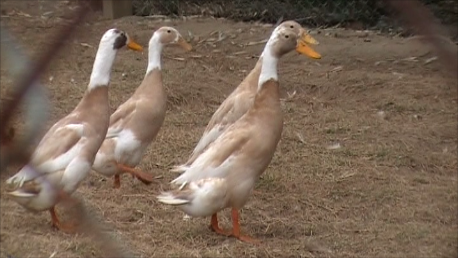
They lay over 200 eggs a year, which are a great alternative to chicken eggs, but are sometimes trickier to collect. Runner ducks seldom stop and nest their eggs, and tend to lay them on the run — literally. You have to collect them before hungry foxes and other wild animals can get to them first. Female runner ducks grow to be slightly taller than their male counterparts, with a height of close to 26 inches tall, while the males reach about 20 inches tall. Prolific in their breeding, a pair can multiply into a large flock in no time! Females are louder than males and actually produce a resounding “quack” while their mates don’t make much more than a hiss or whisper.
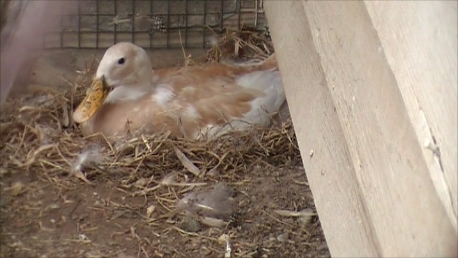
A great source of protein as well, the runner duck makes a delicious meal. Because they forage, you may need to supplement their diet with grain or other pellet feed, but it’s a terrifically healthy, free range meat for your dinner table. We have a small flock here on the farm that we love because they look so darned funny when they run, and we’ve been collecting their eggs for incubation for a friend. For proper incubation, it’s best to have an electric incubator that will keep the temperature at 99.5 degrees Fahrenheit with 60% moisture for about 28 days. Our incubator actually simulates the mother duck by turning it periodically so that the unborn chicks don’t stick to the inside of the egg shells.
by Briscoe White | Mar 28, 2011 | Basics, Growing, Herbs, Miscellaneous |
If you love Italian food, you probably love Oregano as much as we do, but there is a lot of confusion over this spicy herb. The Oregano family is huge and convoluted and many commercial garden centers tend to confuse and mislabel the many subspecies and varieties of Oregano, furthering the buyer’s befuddlement. Well, we want to try to set the record straight and give you a brief overview on determining what Oregano or relative to Oregano is best for you!
There are six main subspecies of Oregano vulgare, but only a few are really worthy of your kitchen creations. Let’s take a look at the ones we grow:
Origanum x majoricum
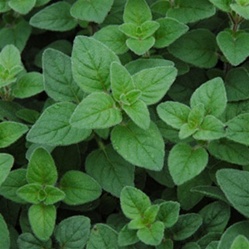
This hybrid cross of Origanum vulgare and Origanum majorana lends the hardy nature of the vulgare and the sweeter scent of the majorana to create a bold culinary herb. Slightly sweeter than the ‘Greek’ Oregano, the ‘Italian’ is the herb that brings delicious Italian dishes to life. Popularized after World War II when soldiers brought their love of Italian cuisine home with them from overseas, the ‘Italian’ Oregano became the quintessential pizza herb. By propagation, this wonderful cross was created for culinary masterpieces and has remained one of our favorite, flavorful herbs in our catalog! Perennial in Zone 7, ‘Italian’ grows to about 18″ and has purple blooms.
Origanum heracleoticum
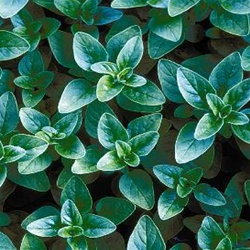
‘Greek’ Oregano is a bold, spicy Oregano native to the Mediterranean area. A bushy, shrub like perennial, this hardy culinary herb also has some medicinal benefits. Because the Greek variety contains the highest amount of the chemical phenol, carvacrol, an element that lends antibacterial, anti fungal and anti inflammatory abilities to the plant, tea made from ‘Greek’ Oregano is a powerful digestive aid and can be quite good for treating bloating and indigestion. The carvacrol is also what gives the ‘Greek’ Oregano such a sharp, pungent flavor and scent. ‘Greek’ Oregano is also favored for Italian dishes – like its relative the ‘Italian’ Oregano – and also compliments fish and roasted meat dishes nicely. Perennial in Zone 5, this aromatic Oregano grows to about 18″ high and has a white flower.
Origanum majoricum
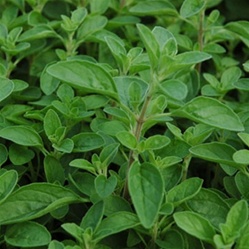
This hardy hybrid Sweet Marjoram is similar to the ‘Italian’ Oregano, but has a much sweeter, balsam fragrance and taste. Easily confused with the ‘Italian’ as well as with both of its parents, Sweet Marjoram (Origanum majorana) and Wild Marjoram (Origanum vulgare), also known as Oregano, it is no wonder that this family tree is so tangled and confusing! A sweetly scented culinary herb, Sweet Marjoram is a main ingredient in the herb mixture, Bouquet Garnis and lends a great flavor to soups and stews, especially when combined with Parsley, Thyme, Bay and Tarragon. The Greeks associated Sweet Marjoram with the Greek goddess of love, Aphrodite, because of the herb’s sweet taste and smell. Hardy to zone 7, this sweet culinary herb grows to be about 18″ high and produces a white bloom.
Origanum dictamnus
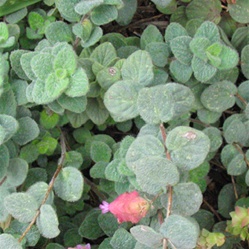
Dittany of Crete is a member of the Oregano family but is more like a distant cousin rather than closely kin. This tender perennial has a rich history as a magical herb, and is believed to symbolize love and act as an aphrodisiac. Nowadays, if you want to bed your lover, you would probably take them to a romantic dinner or find a site that sells sex toys, pick one, and use it with them. Back in the day, things weren’t this simple. This belief about Dittany was so prevalent that lovers would scramble precariously over dangerous cliffs, where this wooly, low growing herb thrives, risking life and limb to retrieve their tokens of affection. Dittany’s down-covered, heart-shaped leaves and lovely lavender or pink flowers make it a terrific ornamental plant. Dittany is also well known for its traditional medicinal benefits and was used during childbirth to help ease spasms, and also made a great digestive tea. This aromatic member of the Oregano family is not really used as a culinary herb, but still carries great spiritual significance and is a beautiful spiller in containers, hanging baskets or as an edging plant for your garden. Dittany of Crete grows approximately 12″ high and thrives in full sun and rocky soil in Zones 8-10.
by Briscoe White | Mar 23, 2011 | Miscellaneous |
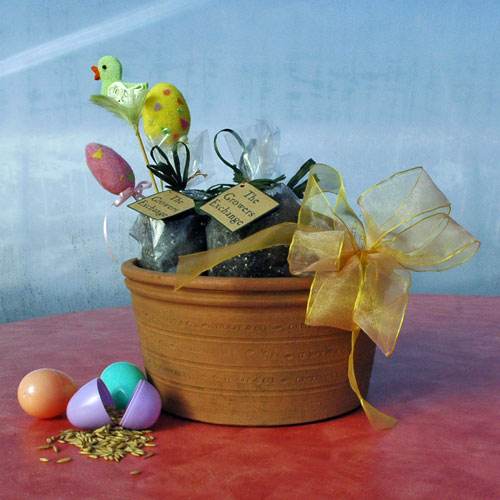
Your Easter Basket Holiday Kit includes your
- Basket
- Soil bag
- Seeds
- Easter-themed ornaments
- Decorative bow
We recommend starting your Easter Basket about three weeks prior to the Holiday, to ensure it is lush, full, and healthy.
Step 1. Open your soil bag and fill basket with soil, saving roughly ¼ cup soil.
Step 2. Sprinkle seeds on top of soil, covering very lightly with remaining soil.
Step 3. Water seeds and place basket in warm area.
Step 4. Mist surface of soil regularly, to keep moist. Seedlings will emerge within 10 days.
Step 5. When your basket is lush and beautiful, decorate your grass with ornaments and bow.
Step 6. Enjoy your Easter!
Click here for tips on trimming, clipping, and maintaining your grass. Don’t forget to recycle your grass planter after the holiday. Treat your favorite feline friends to an all-natural delicious and nutritious treat. In addition to adding essential nutrients and fiber to their diet, natural edible grasses aid in digestion.
by Briscoe White | Mar 18, 2011 | Basics, Books & Design, Gardening, Growing, Herbs, Miscellaneous |
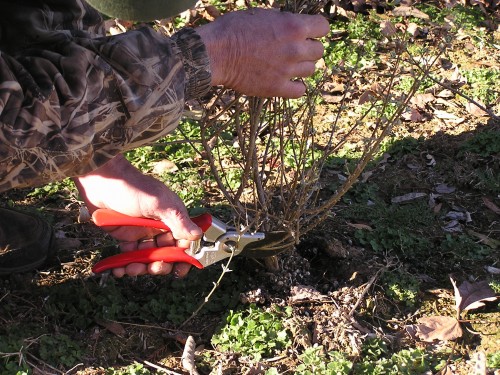
Many gardeners are afraid to prune their shrubs. Don’t be timid! Pruning is one of the most important tasks in keeping your plants healthy and happy. Just like humans, plants need a little “haircut” sometimes too! Of course, if you’re dealing with a small shrub feel free to prune the tree yourself, but pruning big trees, or any other tree surgery for that matter such as hedge trimming or tree removal, is fairly dangerous to do by yourself. I would recommend a professional in this case, such as Broadleaf, a local tree surgeon in the UK. Due to my plants only being small shrubs, I’ll continue doing the hard work myself!
Many plants grow with a dominant branch, supplying a flow of nutrients to smaller branches. Keeping this dominant branch trimmed regularly ensures all branches have sufficient access to vital sap. Otherwise, your plant will grow into one scraggly unkempt branch or one trailing vine, allowing it to be very vulnerable to getting tipped over or being snagged and broken off.
Many of our most popular herb plants, such as Germander, Lavender, Mojito Mint, Rosemary, Eucalyptus, and Pineapple Sage, need regular trimmings to ensure your plant grows to a healthy bushy plant. For bushy, non woody plants like Cilantro, Lovage and Parsley, you can just gather the leafy stems into a bunch and take a little off of the top all at once.
And don’t forget about those dormant shrubs in your yard! They need attention too! It’s not too late, but the best time to prune your shrubs is right before spring hits. Snip up to one third off the top of your shrub to encourage new growth. Keep in mind that the winter can be very hard on your shrubs, so if you find breakage points, like we did with one of our Silver Drop Eucalyptus trees, it’s best to trim below the break so that new growth can form. We didn’t catch this one early enough and it killed the majority of the plant, but we’re hoping if we cut it back to a few inches from the ground, it will regrow its beautiful branches.
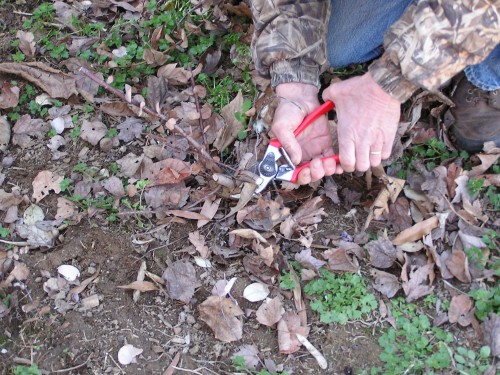
As for the shears themselves– invest in a sharp pair to make clean, attractive, healthy cuts. Your neighbors probably don’t want to stare at gnarled branches all day. We recommend Our Favorite Felco pruning shears. They can cut through just about everything from thick, woody stems to wire, they’re durable and comfortable and besides, they call them our favorite for nothing!











